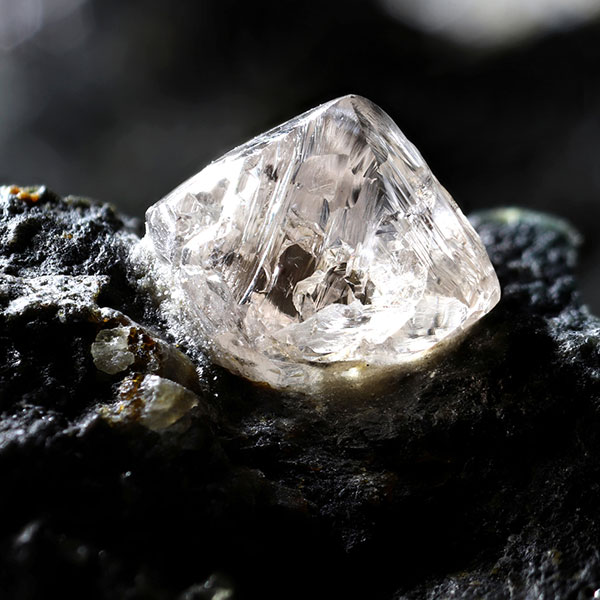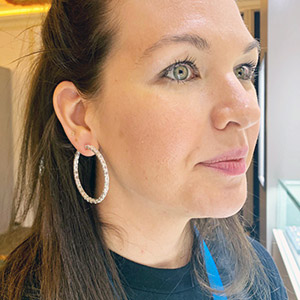
In its annual financial results announced today, Anglo American wrote down De Beers’ book value by $2.9 billion, due to “prevailing diamond market conditions.”
De Beers’ parent company now values the diamond giant at $4.1 billion. Anglo had indicated in its production report earlier this month that it was planning to write down De Beers’ value.
This is the second year in a row Anglo has taken an impairment on De Beers. In 2024, it wrote down the company’s value by $1.6 billion, to $7.6 billion.
“The work to separate De Beers is well under way, with action taken to strengthen cash flow in the near term and position De Beers for long-term success and value realization,” Anglo American chief executive Duncan Wanblad wrote in the annual report.
Anglo said last May that it planned to divest its 85% stake in De Beers, either through an IPO or sale of assets. Wanblad recently told the Financial Times that an IPO is the likelier option. In the same article, the government of Botswana, which owns the other 15% of De Beers, said it was interested in increasing its stake.
De Beers’ diamond production dropped 22% in 2024. In a note within the year-end report, Anglo wrote: “De Beers production was lower, reflecting a proactive response to a prolonged period of lower demand and higher-than-normal levels of inventory in the midstream.”
In the Markets section of the report, Anglo said rough-diamond trading conditions in 2024 were difficult because of “persistent, higher-than-normal midstream inventory levels and the prolonged period of depressed consumer demand in China.”
In 2024, first-quarter results showed signs of recovery in rough demand, mostly because of the short-term impact of a voluntary moratorium on rough imports into India at the end of 2023.
However, as the year progressed, consumer demand in China—previously the second-largest consumer market globally for diamond jewelry—contracted, according to Anglo. Couple that with ongoing caution among U.S. retailers, and midstream polished inventory levels increased sharply in the second quarter, the report said.
A slow third quarter continued the higher-than-normal inventory trend, resulting in lower demand for rough diamonds. Several producers responded by postponing or canceling sales events, Anglo said. In the fourth quarter, midstream inventory levels plateaued, and polished prices began to stabilize.
“Consumer demand for diamond jewelry globally in 2024 is estimated to have contracted 3-4% year-on-year. In the United States, accounting for just over 50% of diamond jewelry sales, demand is estimated to be down 2% year-on-year, driven by a decline in the first half of the year, while the second half demonstrated stabilization, remaining flat year-on-year,” Anglo wrote.
Simultaneously, lab-grown diamond wholesale and retail prices continued to fall throughout 2024, Anglo wrote.
“In the lead-up to the holiday season, a number of U.S. retailers, including Lightbox [De Beers’ lab-grown brand], introduced deep discounts on lab-grown diamond jewelry amongst increased competition, with some retailers also including disclaimers for their customers that lab-grown diamonds may not hold their value over time,” Anglo wrote in its report.
Lab-grown prices are expected to decline further as they do not yet fully reflect the fall in wholesale prices, according to Anglo’s report. It also said there are positive signs that the impact of lab-grown diamonds on demand for natural diamonds is peaking.
“While a proportion of natural diamond demand continues to be affected in the near term by lab-grown diamonds as a result of prevailing retail margins, such margins are expected to be unsustainable in light of increasing lab-grown diamond supply volumes, greater levels of competition, and growing consumer awareness of lab-grown diamond price trends,” the report said.
Anglo has lowered its 2025 production guidance for De Beers to 20 million to 23 million carats. Production could then be increased steadily, to 28 to 31 million carats in 2027, as the business responds to an anticipated market recovery, the financial report said.
(Photo via Getty Image/Bjoern Wylezich)
- Subscribe to the JCK News Daily
- Subscribe to the JCK Special Report
- Follow JCK on Instagram: @jckmagazine
- Follow JCK on X: @jckmagazine
- Follow JCK on Facebook: @jckmagazine






